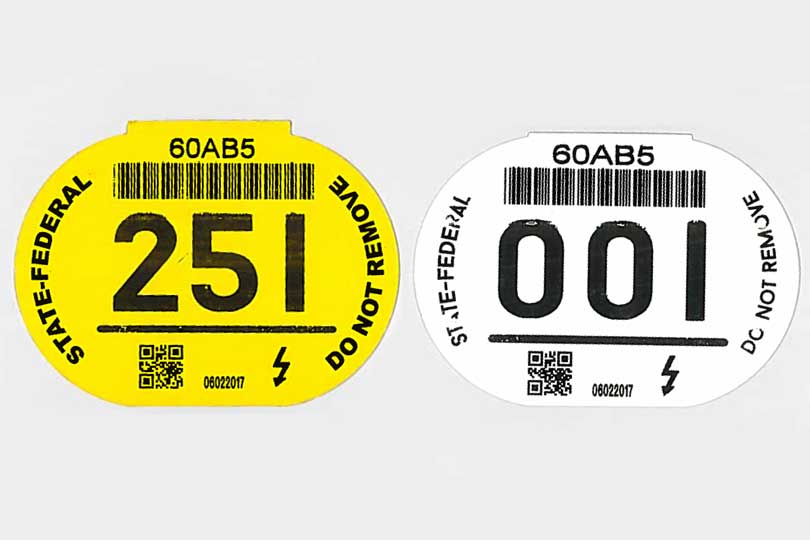By Jessica Domel
Multimedia Reporter
Over the next year, cattle entering select Texas livestock markets will be outfitted with ultra-high frequency (UHF) back tags in lieu of traditional paper tags. This is part of a new animal disease traceability study conducted by the Texas Cattle Feeders Association (TCFA) and Texas Animal Health Commission (TAHC).
“We were really excited to hear the (U.S. Department of Agriculture) USDA approved our request for a proposal for this back tag study,” Savanna Barksdale, TCFA Government Relations coordinator, said in an interview with the Texas Farm Bureau Radio Network.
The $365,600 in funding from USDA will test the efficiency of using UHF back tags at sale barns.
“Most of the funding is going toward tags, as well as ultra-high frequency and low-frequency ear tags, the readers and all the materials it will take to actually get these reads flowing in,” Barksdale said.
Participating livestock markets, or sale barns, will make a complete switch to the UHF tags for the year-long study.
“It’s hardly noticeable,” Barksdale said. “You really won’t be able to look at an animal and tell if it’s a normal back tag or if it is an ultra-high frequency back tag.”
Further down the supply chain at a buyer/dealer facility, stocker operation or feedyard, the UHF back tags will be married to a permanent electronic identification (EID) tag.
“We’ll have readers that are scanning both the back tag and the permanent EID tag. That’s the case for feeder cattle,” Barksdale said. “We’re going to try to catch as many movement events as we can that way until the animal ends up at the packer.”
For adult cattle that are moved directly to the packer, there may not be a permanent tag, so TAHC and TCFA will take readings from the UHF back tag at the sale barn and then at the packer.
TCFA and TAHC, and their collaborators, will then study and evaluate the data received from the back tags.
“We’re going to be looking at read rates. We’re going to be looking at an economic analysis of how expensive is this at each segment, but we’re (also) looking at whether this is a technology that actually works for sale barns that does not interrupt their speed of commerce,” Barksdale said.
The main goal of the year-long study is to advance disease traceability.
“If we have a voluntary traceability system, it would minimize the potential economic impact of a serious disease outbreak, and it really helps protect the U.S. cattle herd,” she said.
If officials can trace a diseased animal through a supply chain quickly, they can prevent additional spread of the disease, locate any livestock that may be affected and potentially lessen the economic impact it has on the industry.
“Not only does that improve the health of our cattle herd, but it protects our producers from the major economic consequences that we could face if we’re dealing with a disease outbreak,” Barksdale said.
Having a voluntary animal disease traceability system may also increase U.S. meat exports.
“There are some export markets that don’t accept or are not as open to U.S. beef because of our lack of traceability,” Barksdale said. “That’s another reason we’re excited to see these different pilots, because if we can develop a voluntary system that will help us open more export markets for U.S. beef, that’s a great thing for our feedyards and all producers.”
The Livestock Market Association of Texas, Texas A&M University, Texas A&M AgriLife Extension Service and the Texas and Southwestern Cattle Raisers Association are among the study’s collaborators.
The estimated completion date for the study is Oct. 1, 2020.
Barksdale encourages those involved in the cattle industry who are interested in advancing disease traceability to consider the Texas Traceability Pilot.
“That’s going to be different than this back tag study, but it’s still a way to do your part in enrolling cattle and helping us,” Barksdale said.
Sign up and participation details are available at TraceabilityPilot.com.


can you tell me where can we buy the backtags?